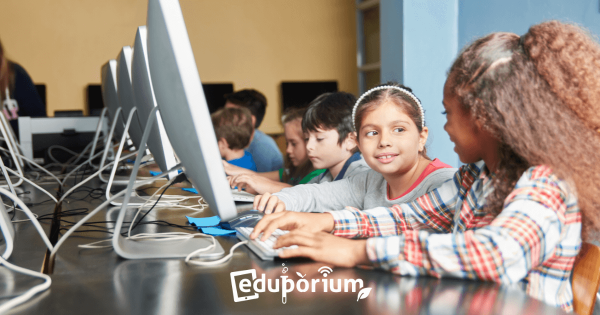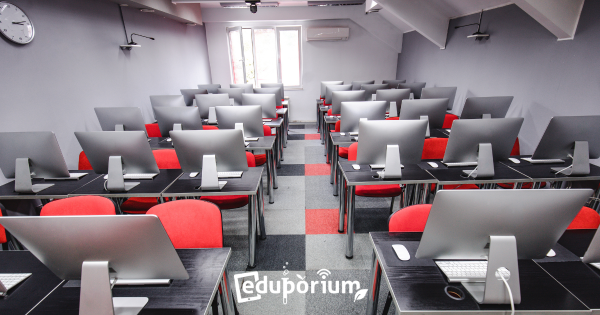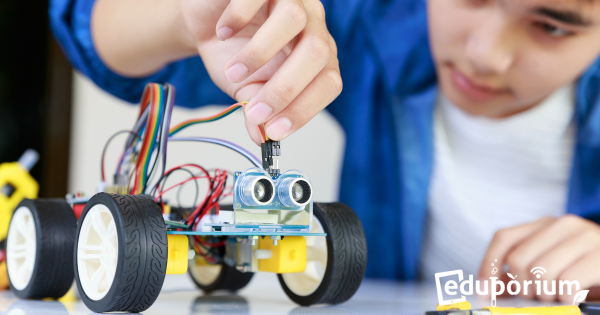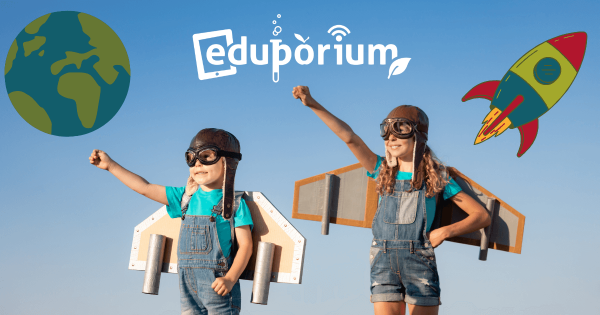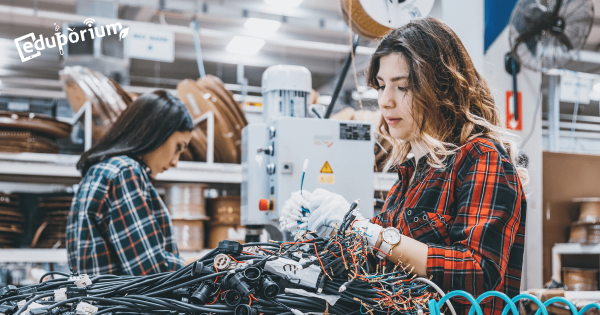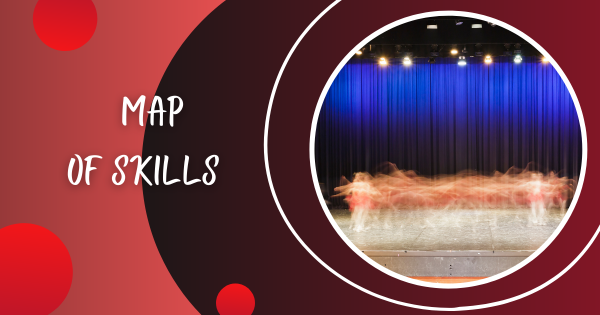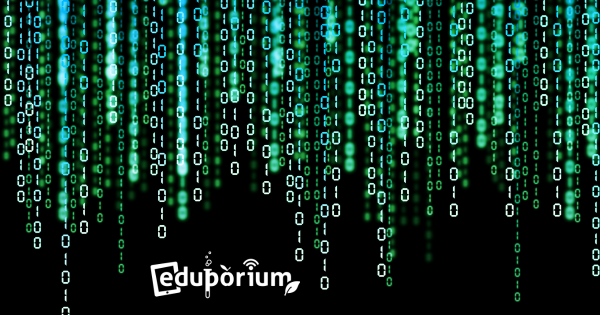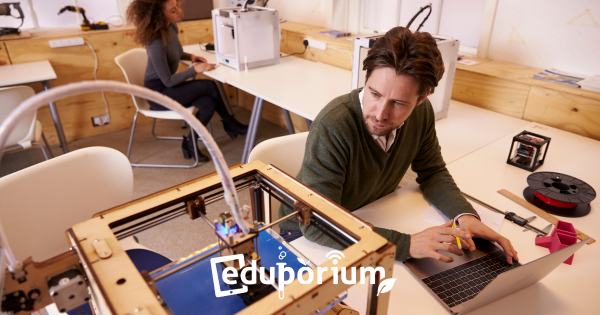The Maker Movement is incredibly powerful for something that just got its (official) start only a few years back. It’s completely user-driven and becoming a cornerstone for success in the 21st century. MakerEd is a form of STEM Education that combines and embodies the spirit of acquiring necessary knowledge through hands-on trial and error.
STEM
When it comes to STEM in 21st century teaching and learning, there are few limits to what students can accomplish. Besides helping boost their overall engagement and enjoyment levels in the here and now, access to STEM learning and opportunities to build real-world skills often significantly improve how students prepare for the future. Whether it's with introducing them to coding in the early grades, engineering in their middle years, or the benefits of more complex technologies, like virtual reality or artificial intelligence, in high school, STEM education is a crucial piece of student development. With such huge potential and importance, however, this instruction requires planning, guidance, and equipment. And, as the economy keeps trending toward STEM-dominated professions and opportunities, exposure to these areas is vital. Thankfully, there are few restrictions to leading effective STEM lessons.
Our mission is helping educators develop students who are truly Future Ready and helping them facilitate relevant learning is how. To that end, we offer a robust online store filled with the latest STEM solutions. But, beyond that, we love creating and sharing impactful content to help enhance how educators use these tools in instruction. In this section of our blog, you'll find countless posts on trending STEM topics, how-to articles, many recommendations for classroom solutions and projects, industry updates, connections between STEAM tools and the future, and a lot more. We are also extremely committed to closing certain gaps and increasing equity in STEM education. As such, a lot of this content contains context for advancing inclusive opportunities for all kids. We encourage you to search through the posts to find something relevant for you. And, if there's any topics we've missed, let us know.
-
Eduporium Weekly | Why Isn't CS For All?
Teaching with technology can be intimidating for some teachers, especially if they are new to it, feel the pressure from society or lack the creative ideas for weaving the products into the curriculum. It’s okay to feel that kind of anxiety though—in fact, it’s perfectly normal! Just remember that there’s no wrong way to explore teaching with technology. -
The New York City Mayor’s Plan To Better Lives Using EdTech
Mayor de Blasio stated that, in an effort to ensure that every child has the opportunity to develop skills needed not only to succeed in the workforce of the future, but even to enter and succeed within New York City’s rapidly growing technology sector, every school in the city will be required to offer computer science courses to students—regardless of -
Coding And Robotics—Evolving From Feared To Required
Coding is a central skill that’s becoming more and more necessary in order for workers to thrive in this increasingly technological era. It’s on its way to (if it has not already) becoming a worldwide language—and an undeniable component of global culture. So, recently, enthusiasm for teaching coding skills in the classroom has grown—a lot—and kids are benefitting. -
Eduporium Weekly | Prepare Now And Thank Us Later
There are so many things that contemporary educators have to account for and many of them—like personalizing learning, teaching coding, and using technology—are still all really new. Luckily for them, we can share a bunch of sound advice for helping to get today’s students more ready to take on tomorrow’s increasingly complex world! -
Eduporium Weekly | Create Your Own Creativity
Technology in the classroom allows creativity to flow, but can we actually teach kids to instinctively be creative? Is there a final exam teachers can give to determine their creative levels? In order to be as creative as possible, everyone, including students, needs to be open to new experiences and methods of carrying out old ones. -
Eduporium Weekly | Why Schools Need Technology
One way to introduce students to STEM is to make it fun while they learn key skills through active interaction. Digital curricula are a great idea, especially if you can learn from educators who have initiated similar journeys. There are so many projects and fun activities students can do right in the classroom or take home for collaboration outside school. -
Map of Skills | Managing a Modern-day Performance
“The role of a stage manager is an important and, at times, hectic one. They’re responsible for determining when the lights go on, when dancers go on and when sound goes on for a performance. So, you start the project by watching the ballet—watching the rehearsals—and understanding the sequence of timing,” Yolanda said. -
Eduporium Weekly | The Power Of Code
Sure, you can write code to a computer program to gain your coding experience, but we prefer to leave that to more experienced scientists. You probably never realized this, but many modern and simple EdTech tools involve teaching the basics of coding. For example, in recent years, coding has even found its way into the educational robotics field. -
Eduporium Weekly | 3D Printing And Education's 3rd Dimension
Whether it’s establishing a fully hands-on classroom or employing some of the latest trends like 3D printing, we are definitely in the midst of an education revolution. Kids are adapting to become almost entirely self-sufficient or at least able to know that they do not always need guided instructions in order to learn and develop.





